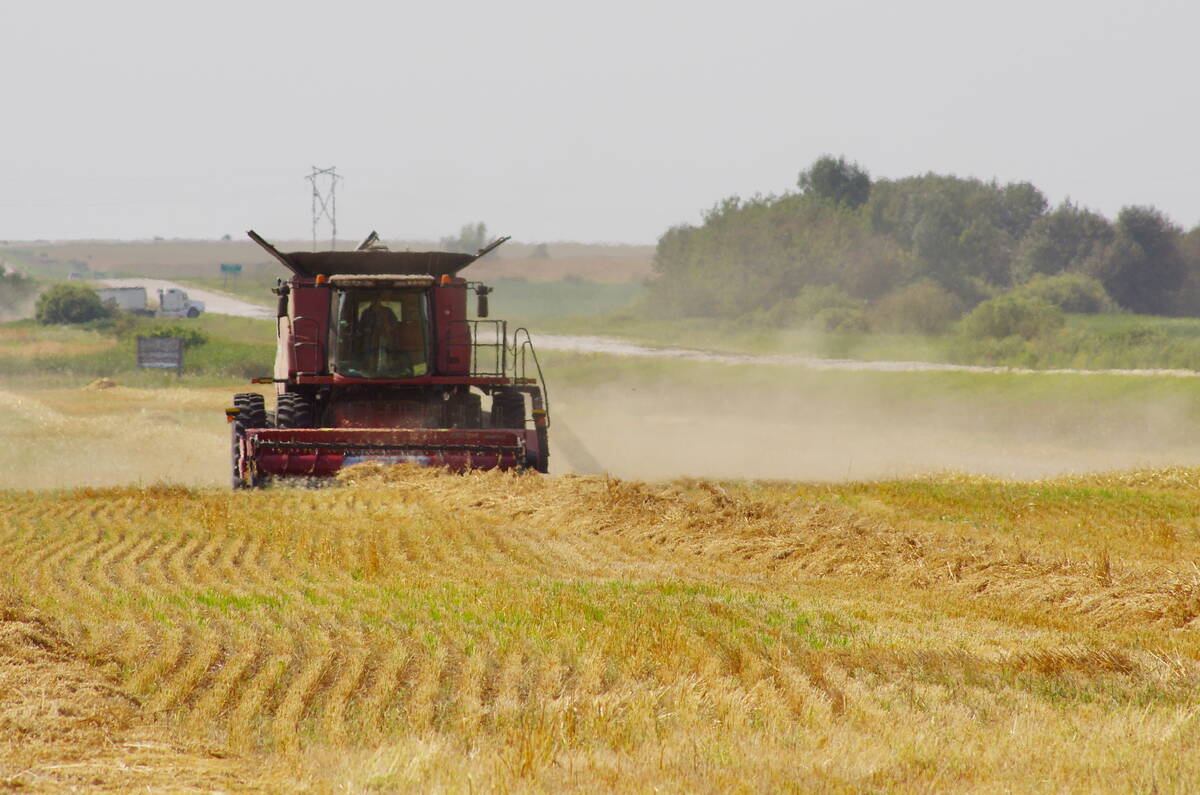Last summer’s drought ruined crops for producers across the West, but there is a possible silver lining.
As crops came off early, if at all, there was little that fertilizer could do without moisture, so unused nitrogen, in the form of nitrate, was left behind in the soil.
With that N still in the ground, it may be possible to cut costs for some crops in the face of rising fertilizer prices.
Depending on location and variety being seeded, there are some considerations producers should consider when seeding this spring, say two agronomists.
Read Also

Herbicide resistance sprouts in Manitoba’s wild oats
Farmers across Manitoba this fall are gearing up for the latest salvo in what, for many, has become a longtime battle to beat out wild oats.
In Manitoba, there are drawbacks to higher nitrate levels that producers should be aware of, said Laura Schmidt, an agronomist with Manitoba Pulse and Soybean Growers.
“Last year with the drought we had less crop uptake and removal from lower yields. We also had early termination of some crops and fewer losses to leaching and de-nitrification,” she said. “For high-nitrogen use crops, this is an asset in a time of high fertilizer prices but for our N-fixing legumes, this is an extra challenge.”
Schmidt cautioned that seeding pulses into high-nitrate soil is an area that requires more study. But based on field observations in Manitoba, there are some considerations.
Producers should know how much nitrate is in the soil.
“It’s going to be the best way to know what you’re dealing with,” she said.
In Manitoba, the average nitrate volume in many fields is higher than normal.
“We’re testing at about 70-pounds nitrate (N) per acre in the top two feet following wheat and canola with some fields in each region testing above 100 lb.,” said Schmidt.
For soybeans and peas, that level should be less than 50 lb. per acre.
That is likely to affect nodule growth in pulse crops, allowing plants to become “lazy,” she said.
“If you’ve got nitrogen readily available in the soil, why spend the energy to make a (nitrogen-producing) nodule?”
Above that 50-lb.-per-acre level, Schmidt said pulse growers could see a delay in nodulation and maturity along with iron deficiency in soybeans.
“Excessively high residual nitrate levels — above 100 lb. of N an acre — it’s more economically worthwhile to pivot those acres to a crop that will actual use that nitrate,” Schmidt said.
For fields with high but not excessive nitrogen levels, it’s not clear how nodulation in pulse crops will be affected. Based on the field soybean observations and small plot work in Manitoba, she said producers in this mid-zone can expect to experience delayed nodulation, soybean iron deficiency and lodging in peas.
But there is also evidence that fields that have historically been used for soybeans may have some residual rhizobia (nitrogen-fixing bacteria) levels in the soil.
Schmidt suggested that in fields testing in the 50 to 90-lb. per acre range, farmers should consider a double inoculation strategy.
“We do have estimates of crop uptake for nitrogen. But they are just that, they are estimates.”
Nitrate levels on the western half of the Prairies is also an issue but the effects on lentil and dry pea crops are a bit different in Alberta, said Ross McKenzie, a retired agronomy research scientist with Alberta Agriculture.
McKenzie said he doesn’t think N levels of up to 100 lb. per acre with peas, lentils or chickpeas will affect yields on those crops in Alberta.
“If you do have relatively high in nitrogen soil levels, the lentils and peas will still do OK,” he said, but cautioning about the potential of plants to become “lazy” if N-levels are too high.
But that N-level bar is a little higher in the context of lentils and peas in Alberta, said McKenzie, with 200 lb. per-acre the point at which farmers could expect to see issues and should consider cereal or oilseed crops instead.
Extremely high N-levels in soil will cause excessive vegetative growth, delayed crop maturity and increased risk of poor crop standability with the potential of disease susceptibility.
Careful testing will be key, McKenzie said, as well as making sure that’s being done right down to two feet in depth.
“With nitrogen being somewhat mobile in soil — even though we didn’t have much moisture last year — you want to soil sample all the way down to 24 inches,” he said, adding that six, eight or 12 inches down won’t provide an adequate soil profile.
“If your agronomist only sampled eight inches, you’re not getting a true picture of the nitrate carryover.”
Additionally, in the brown and dark brown soils of Alberta and Saskatchewan, McKenzie said many farmers banded nitrogen in fields.
“Those fertilizer bands weren’t really allowed to dissipate,” he said. “If an agronomist is sampling normally, it’s quite possible they would be missing those bands and not getting a true picture of how much nitrogen is being carried over.”
Broadly speaking, McKenzie suggested producers look to other crops than pulses if dealing with high N-levels while keeping in mind the need for good crop rotation practices to minimize disease pressure and residual herbicide carryover.


















